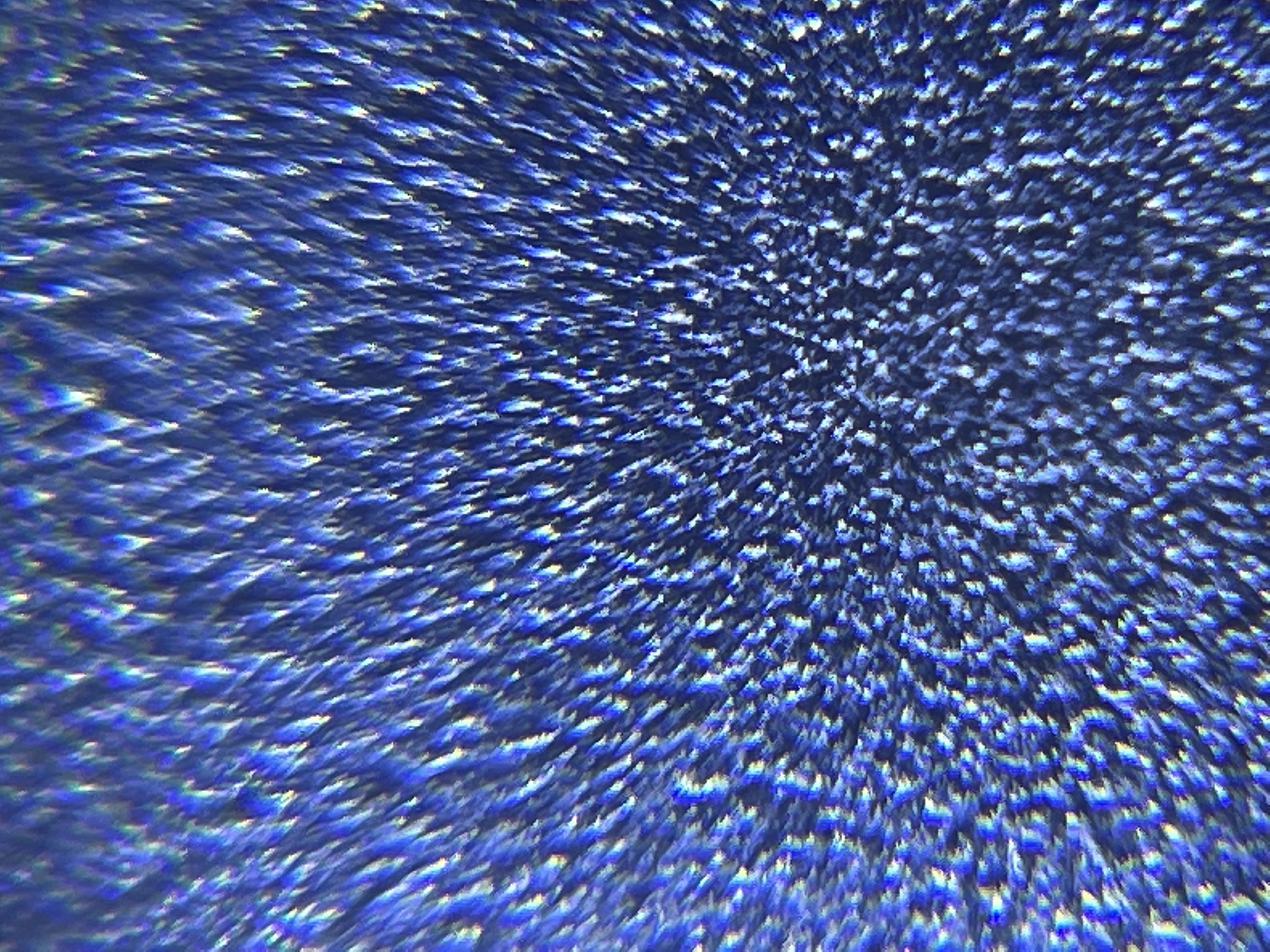Collective Design Space V2
After experimenting individually in the previous week, we moved to refining our collective design spaces with the newly built prototypes. This way, we managed to restructure and sharpen the profile of the design space. In the case of group six (as shown below) it led us to refine the focus to include three big topics: Biology, Technology and Ancestry. These three areas of inquiry can be summarized as the task to mediate between nature and us humans through the means of technology. It also emphasizes the idea that the classification between humans and the rest of our ecological surroundings is arbitrary at best and very harmful at worst. To bridge that gap, to create empathy, to build symbiotic relationships and to foster a greater understanding of our natural kin are some of the goals that conceptually unite the projects within this design space.
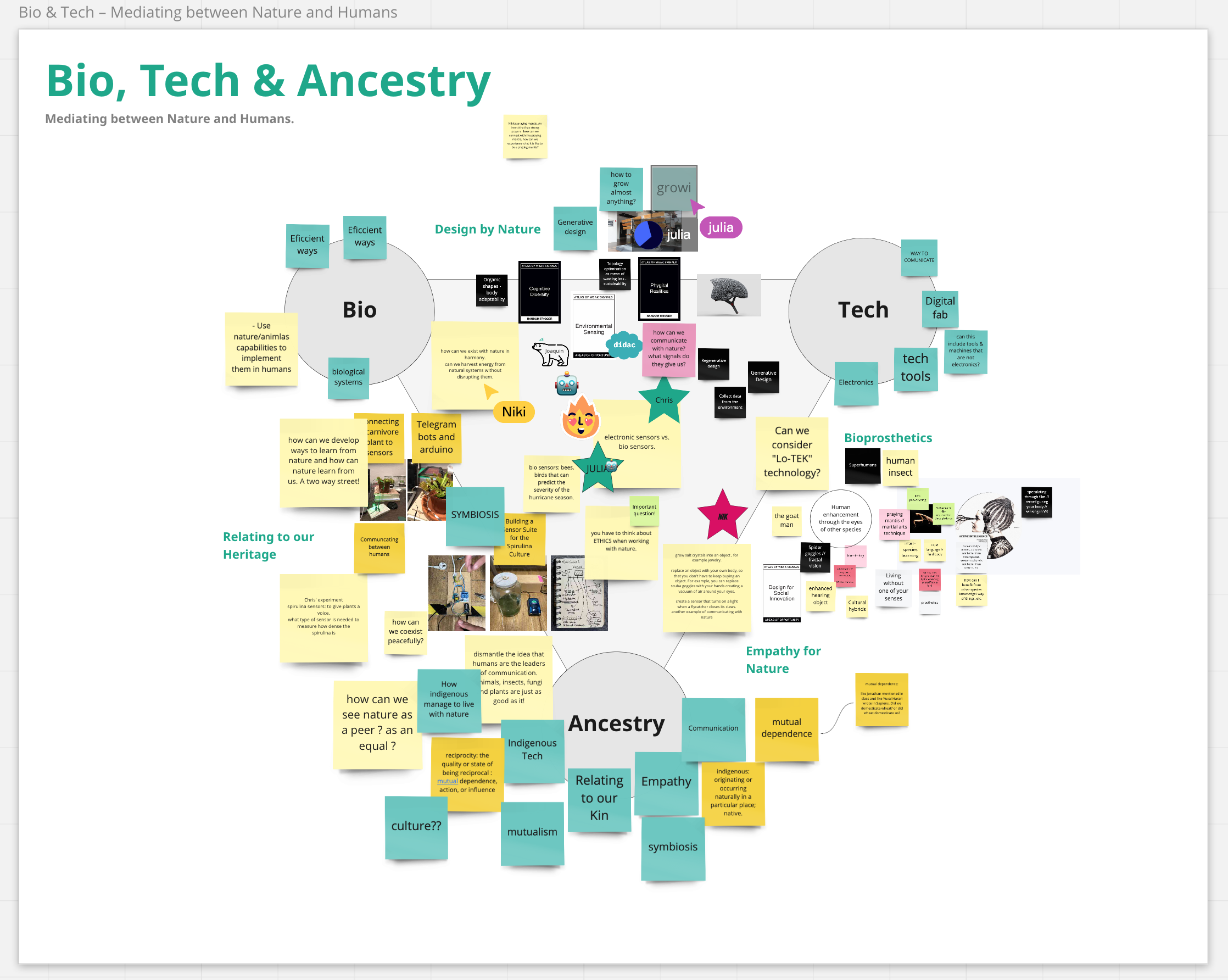
A Screenshot of the collective design space taken on Monday 25, ca. 6pm.
As for my own positioning within this design space it is important to understand not only the current state of the experiment but as it ties into the greater conceptual framework of using technology enable organisms to communicate. This is why the experiment currently relates more to the intersection of biology and ancestry, but is poised to move more into the sphere of technology to effectively utilize tools like machine learning as illustrated by the image below.
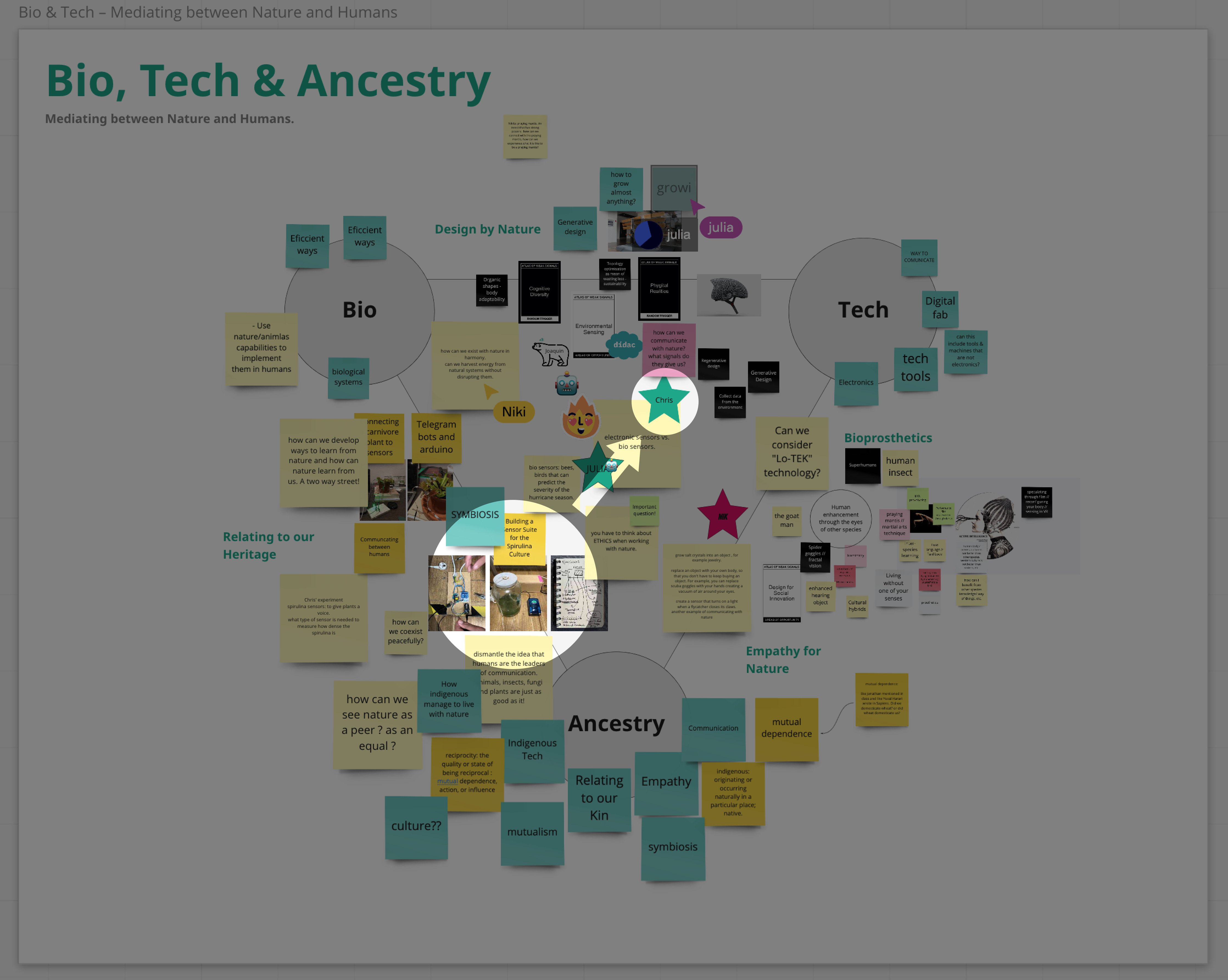
Positioning my experiment and my avenue of inquiry relative to the collective design space.
Prototyping a First Human-Plant-Interface
After completing the group work, I started working on another proof-of-concept prototype. The goal was to connect a temperature and humidity sensor to the Adafruit ESP32 Feather microcontroller, to read the temperature, to assert if the temperature is within a range favorable to promote Spirulina growth and to finally give a visual feedback via a multi-colored LED strip. Below, in images and videos, the process and outcome is shown. You can find the complete code and all future updates Github.
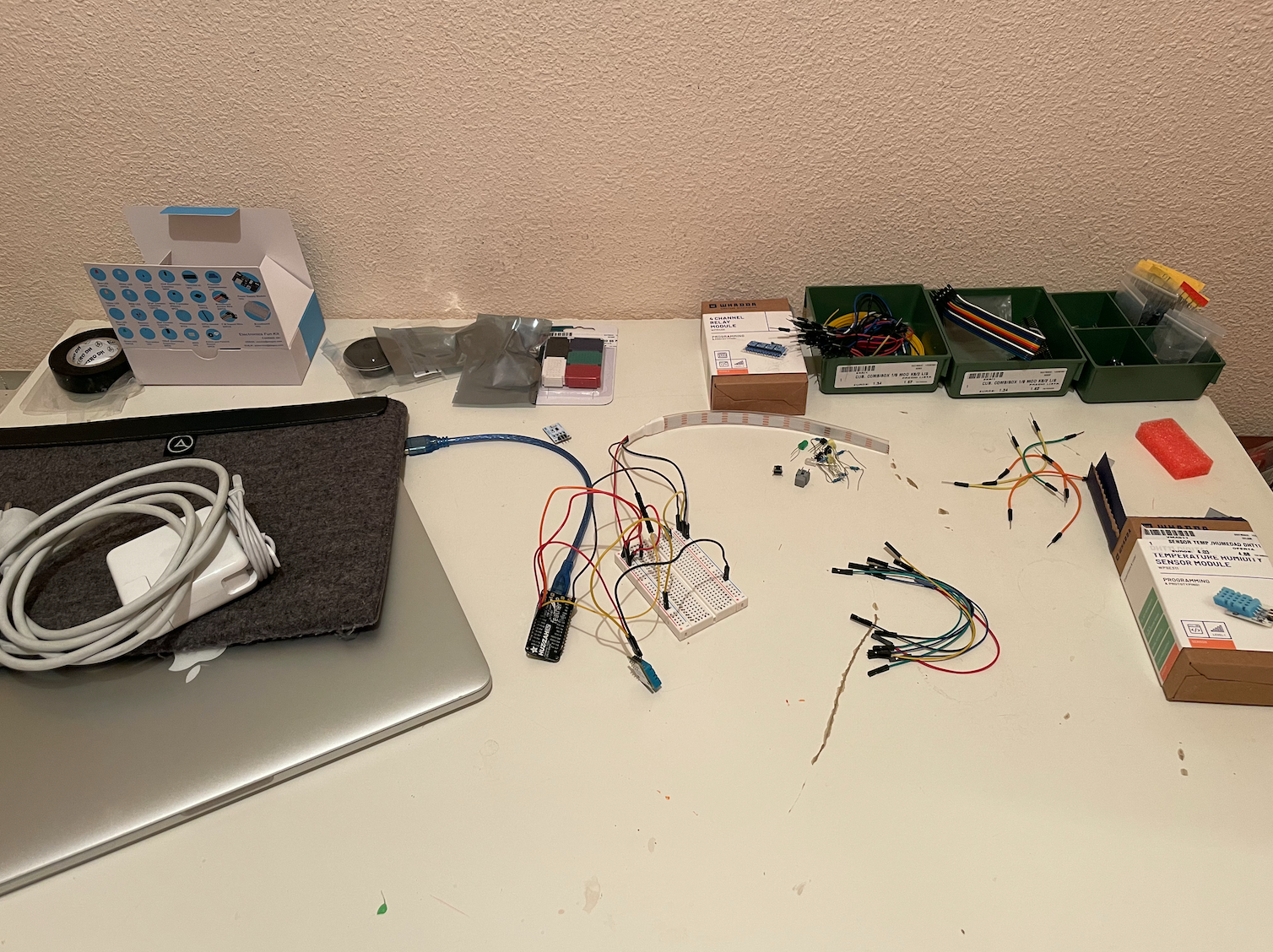
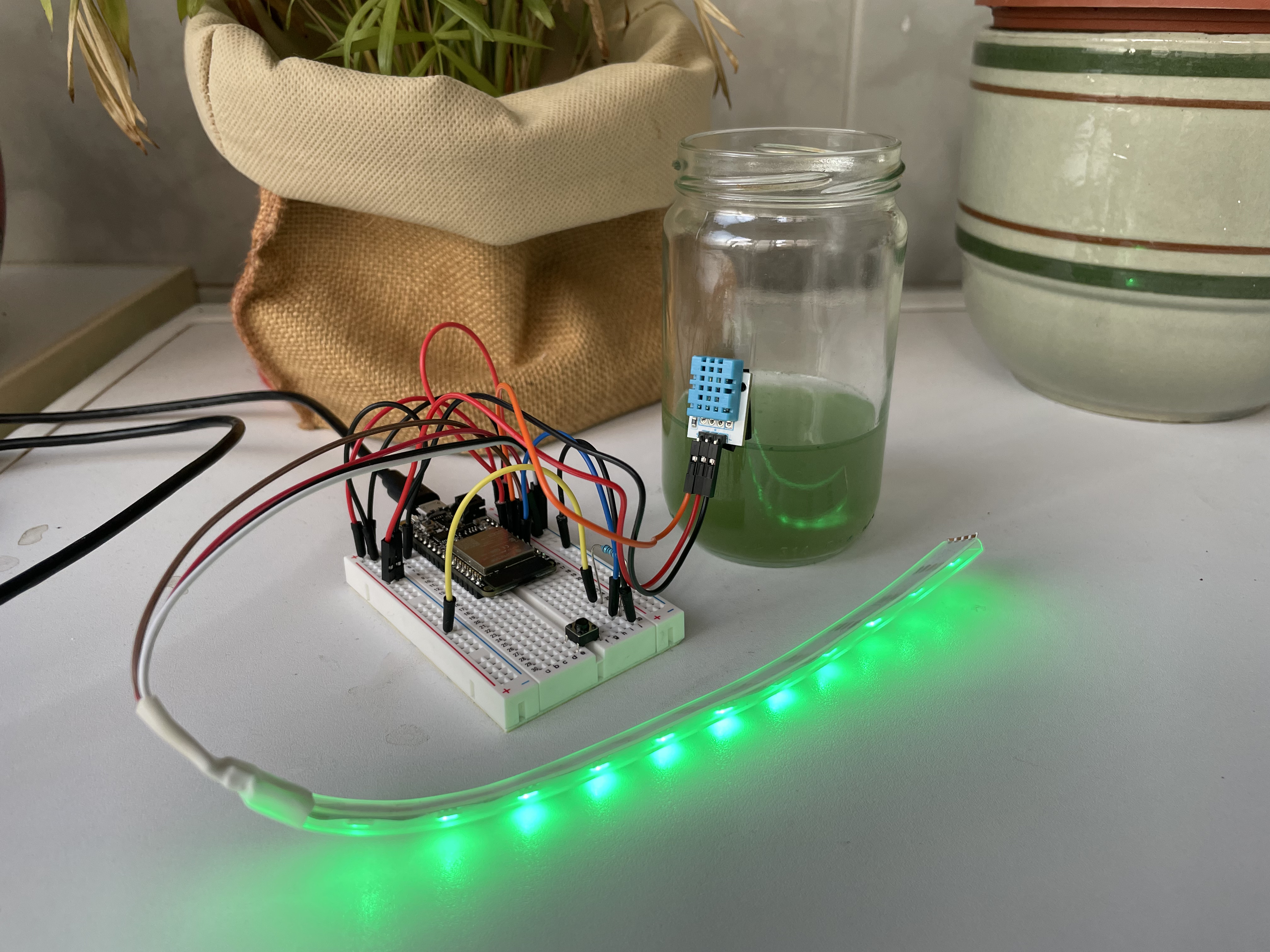
My workspace when starting the experiment vs. the working prototype.
The sensor reading nominal temperature (20-30° Celsius) vs. the sensor reading a heightened temperature (>30°), which would hinder growth.
A demonstration of the working prototype; the code can be found here.
Exploring First Physical Designs
Besides refining the conceptual frame of the project, progress has also been made on the front of exploring possible designs for a large scale Spirulina farm (20+ liters). As technology has advanced in the last years to enable even tiny LEDs to have an excellent light bandwidth, high energy efficiency and a sufficient Lux output while maintaining a incredibly small form factor, we now have a lot of freedom to combine the form of the tank itself (holding the medium) with the necessary sensors and lights. As shown below there are many different ways to prioritize simplicity in prototyping, light homogeneity or surface area of the construction – just to name a few possible solutions. The sketches below can be seen as the first inquiries into a design that will surely have to compromise between functional and aesthetic factors in a creative way. Modularity and simplicity will play an important role for the first iterations, while maximizing favorable growth conditions will likely become the more prevalent design goals later on.

Exploring different possible designs of for a large-scale Spirulina farm form factor.
